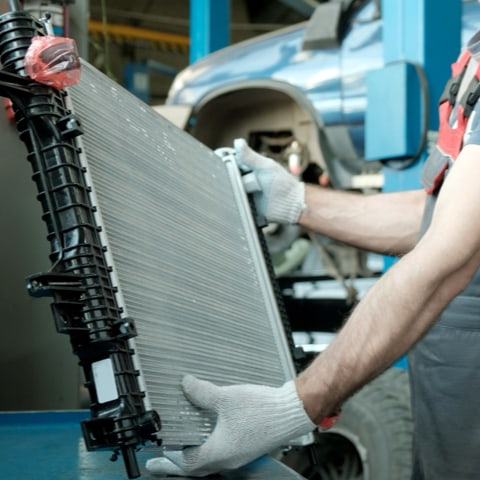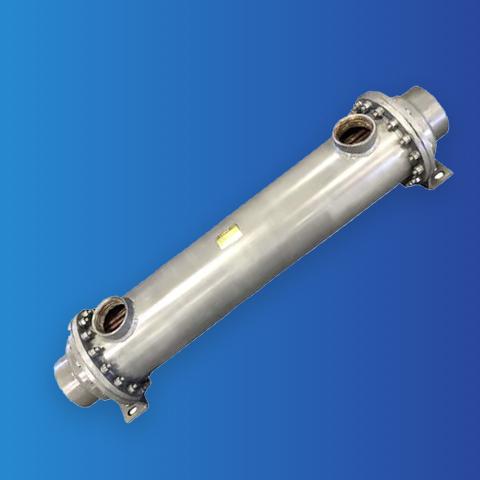The last thing you want when driving in the cold Alberta winter is a malfunctioning car heater. Not only is it uncomfortable, but it can also be a dangerous distraction while driving. Various reasons can cause your car’s heater not to work efficiently.
Low coolant levels, a malfunctioning thermostat, a clogged heater core, issues with the blower fan, and a failed heater control valve are the most common reasons your car’s heater may stop working correctly. Regular maintenance and servicing from experienced technicians can help prevent these issues.
HOW DOES A CAR HEATER WORK?
Your car’s engine generates heat as it runs, and this warmth is harnessed by the heating system, transferring it from the engine to the passenger compartment. The engine’s coolant circulates through a small radiator called the heater core inside the passenger compartment.
Air is directed over the heater core by a fan, which is warmed as it passes over the hot heater core. The warm air is then blown into the passenger compartment through vents, providing warmth and comfort to the occupants.
COMMON CAUSES OF A MALFUNCTIONING CAR HEATER
A few things can go wrong and affect your car’s heater. Here are some of the most common.
LOW COOLANT LEVELS
Coolant keeps your car’s engine and radiator system running smoothly by regulating the temperature and preventing overheating. But when the coolant level gets too low, problems start creeping in—including a malfunctioning heater.
As your car engine heats up, it generates heat, and coolant helps remove the excess heat from the system. But if there is not enough coolant, things can go awry. If the heater core does not get enough hot coolant flowing through it, less hot air will be produced. On top of that, the engine itself can start to overheat, leading to a complete shutdown of your car.
Coolant can slowly evaporate over time, but the more likely culprit behind low coolant levels is a system leak. So, if you are shivering in the car, it might be worth checking for signs of coolant leakage.
MALFUNCTIONING THERMOSTAT
The thermostat’s primary function is to control the amount of coolant that flows from the engine to the radiator, helping the engine stay within an optimal operating temperature range. However, when the thermostat starts malfunctioning, the valve can get stuck closed, limiting or stopping coolant flow. This lack of coolant flow causes a ripple effect that can lead to heating system problems.
The thermostat could also get stuck open, lowering the coolant temperature and affecting the heat from the heater. Get a mechanic to check your car’s thermostat and replace it if necessary.
HEATER CORE BLOCKAGE
The heater core is the heart of the heating system, and it is responsible for radiating heat into the vehicle’s cabin. The hot engine coolant flows through the heater core, and the blower fan blows air over the heater core, creating warm air.
However, debris and sediment can accumulate in the heater core over time, causing blockages that limit the flow of hot air. An unaddressed blockage can cause irreversible damage to the heater core, leaving you with a hefty repair bill.
If you notice a musty smell and cold airflow from the vents even with the heater on, it may be due to a blockage. A mechanic can flush the heater core to remove the blockage.
ISSUES WITH THE BLOWER FAN
The blower fan is crucial for moving the hot air from the heater core into the passenger compartment. If the blower is not working, it could be due to a blown fuse, a faulty motor, or wiring issues. Alternatively, a dirty cabin air filter can reduce warm airflow into the cabin.

FAILED HEATER CONTROL VALVE
The heater control valve controls the flow of the heated coolant that enters the heater core, which warms the air passing through the vents into your car. The heater control valve operates via a cable or vacuum system that opens and closes a valve inside the component.
If the valve fails, it could result in limited or no hot air coming from the heater. You may notice that the temperature in your car fluctuates or becomes difficult to control. Sometimes, this could result in only warm air blowing, even when the heat is off.
This failure could happen due to simple wear and tear, but a mechanic can check your car’s heater control valve and replace it if necessary.
STAY WARM WHILE ON THE ROAD
Driving in the cold without a functioning car heater can be uncomfortable and dangerous. While regular use can wear out your car’s heating system, regular maintenance and servicing can help prevent issues. City Wide Radiator’s heat transfer specialists have years of experience providing quality heater services.Do not wait until your car heater breaks down completely! Give us a call if you notice your car is not warming up as you expect. Your safety and comfort while driving should be a top priority.











